Strawberries Companion Plants: The Best Options for a Thriving Garden
Strawberries are a popular fruit that can be grown in various climates. Companion planting is a gardening technique that involves planting different crops together to benefit each other. When it comes to strawberries, companion planting can help improve soil quality, boost yields, and ward off pests and diseases.
Disclosure: As an Amazon affiliate, I earn from qualifying purchases at no extra cost to you. My blog contains other affiliate links as well for your convenience. To learn more, you may read my Disclosure Policy. Thank you for supporting my blog!
There are several plants that make great companions for strawberries. Legumes such as peas, beans, and lupins can fix nitrogen in the soil, making it easier for strawberries to absorb nutrients. White clover is another legume that can help suppress weeds while also attracting pollinators. Other herbs and vegetables that can be planted alongside strawberries include dill, coriander, mint, lettuce, spinach, garlic, and onions. These plants can help repel pests and provide shade and ground cover.
However, not all plants make good companions for strawberries. Certain plants, such as brassicas like broccoli and cabbage, can attract pests and diseases that can harm strawberries. It’s important to choose companion plants wisely and avoid planting incompatible crops together. By selecting the right companion plants, gardeners can create a thriving ecosystem that benefits both their strawberries and other crops.
Companion Plants for Strawberries
When it comes to growing strawberries, companion planting can be an effective way to enhance the growth and health of your plants. Companion plants are those that are planted alongside strawberries to provide benefits such as pest control, nutrient enhancement, and improved soil quality. Some of the best companion plants for strawberries include:
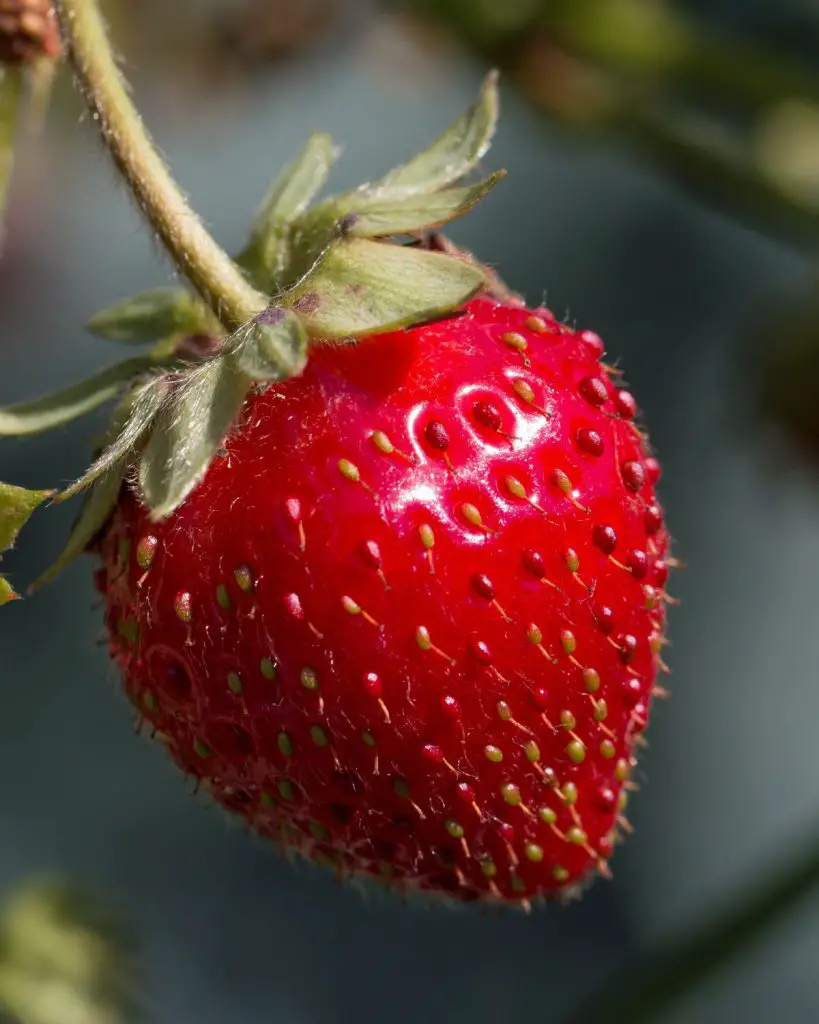
Benefits of Companion Planting
Companion planting offers several benefits for strawberries, including:
- Pest control: Certain companion plants can help repel pests and insects that may harm strawberries, such as aphids, spider mites, and slugs.
- Nutrient enhancement: Companion plants can help improve soil quality by fixing nitrogen, adding organic matter, and increasing soil fertility.
- Improved growth: Some companion plants can help improve the growth and yield of strawberries by providing shade, reducing competition for resources, and attracting beneficial insects.
Borage
Borage is a popular companion plant for strawberries due to its ability to attract bees and other beneficial insects. It can also help repel harmful insects such as tomato hornworms and cabbage worms.
Spinach
Spinach is an excellent companion plant for strawberries due to its ability to fix nitrogen in the soil. This can help improve soil fertility and promote healthy growth in strawberries.
Thyme
Thyme is a natural insect repellent and can help repel pests that may harm strawberries, such as whiteflies and spider mites. It also has antimicrobial properties that can help prevent fungal diseases.
Garlic and Onions
Garlic and onions are both effective at repelling pests such as aphids and spider mites. They can also help improve soil quality by adding organic matter and increasing soil fertility.
Lettuce
Lettuce is a good companion plant for strawberries due to its ability to provide shade and reduce competition for resources. It can also help attract beneficial insects such as ladybugs and lacewings.

Marigolds
Marigolds are a popular companion plant for strawberries due to their ability to repel harmful insects such as nematodes and aphids. They also have antimicrobial properties that can help prevent fungal diseases.
Beans
Beans are a legume and can help fix nitrogen in the soil, which can improve soil quality and promote healthy growth in strawberries. They also provide shade and reduce competition for resources.
Chives
Chives are a natural insect repellent and can help repel pests that may harm strawberries, such as aphids and spider mites. They can also help improve soil quality by adding organic matter and increasing soil fertility.
Dill and Sage
Dill and sage are both effective at repelling harmful insects such as aphids and spider mites. They can also help attract beneficial insects such as ladybugs and lacewings.

Asparagus
Asparagus is a good companion plant for strawberries due to its ability to provide shade and reduce competition for resources. It can also help improve soil quality by adding organic matter and increasing soil fertility.
Tomatoes and Potatoes
Tomatoes and potatoes are both members of the nightshade family and should not be planted near strawberries as they can attract pests and diseases that may harm strawberries.
Herbs
Many herbs such as caraway, yarrow, mint, and catnip can be effective at repelling harmful insects and attracting beneficial insects. However, some herbs such as fennel should be avoided as they can attract pests that may harm strawberries.
Peppers
Peppers are a member of the nightshade family and should not be planted near strawberries as they can attract pests and diseases that may harm strawberries.
Nasturtiums
Nasturtiums are a good companion plant for strawberries due to their ability to repel harmful insects such as aphids and whiteflies. They can also help improve soil quality by adding organic matter and increasing soil fertility.
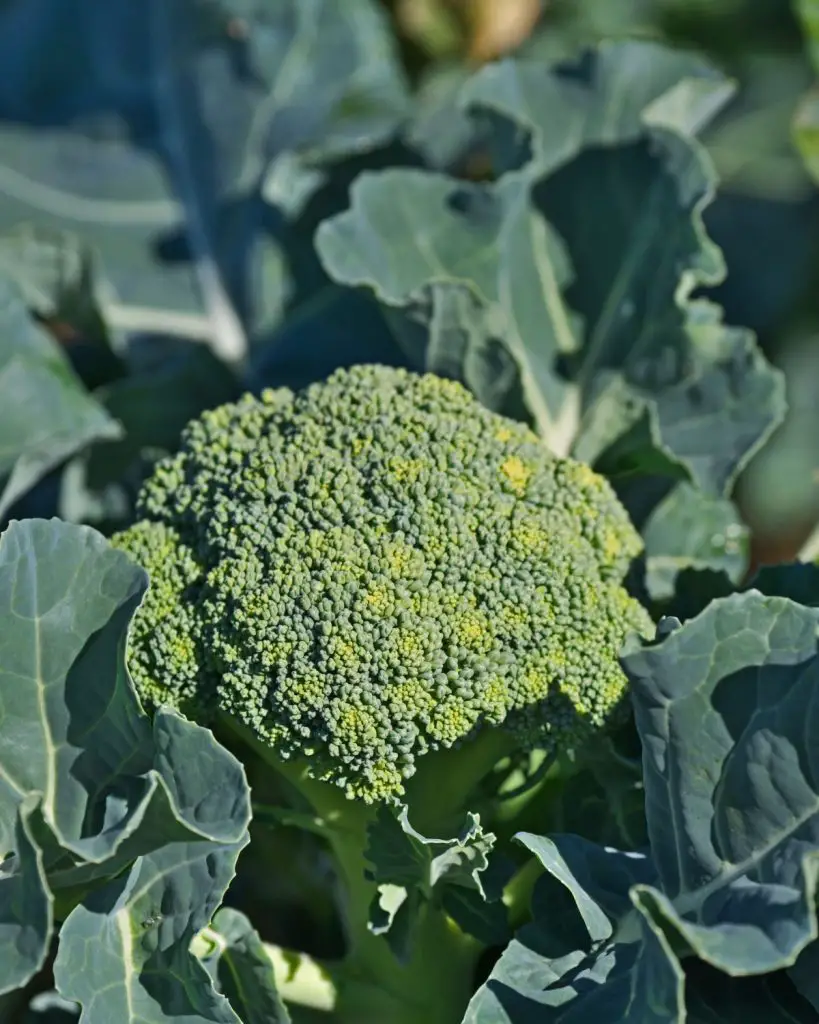
Broccoli and Cauliflower
Broccoli and cauliflower are both members of the brassica family and should not be planted near strawberries as they can attract pests and diseases that may harm strawberries.
Coriander
Coriander is a natural insect repellent and can help repel pests that may harm strawberries, such as aphids and spider mites.
Rhubarb
Rhubarb is a good companion plant for strawberries due to its ability to provide shade and reduce competition for resources. It can also help improve soil quality by adding organic matter and increasing soil fertility.
Bush Beans and Peas
Bush beans and peas are both legumes and can help fix nitrogen in the soil, which can improve soil quality and promote healthy growth in strawberries.
Cabbage and Leeks
Cabbage and leeks are both members of the brassica family and should not be planted near strawberries as they can attract pests and diseases that may harm strawberries.
White Clover and Creeping Thyme
White clover and creeping thyme are both effective ground covers that can help improve soil quality by adding organic matter and
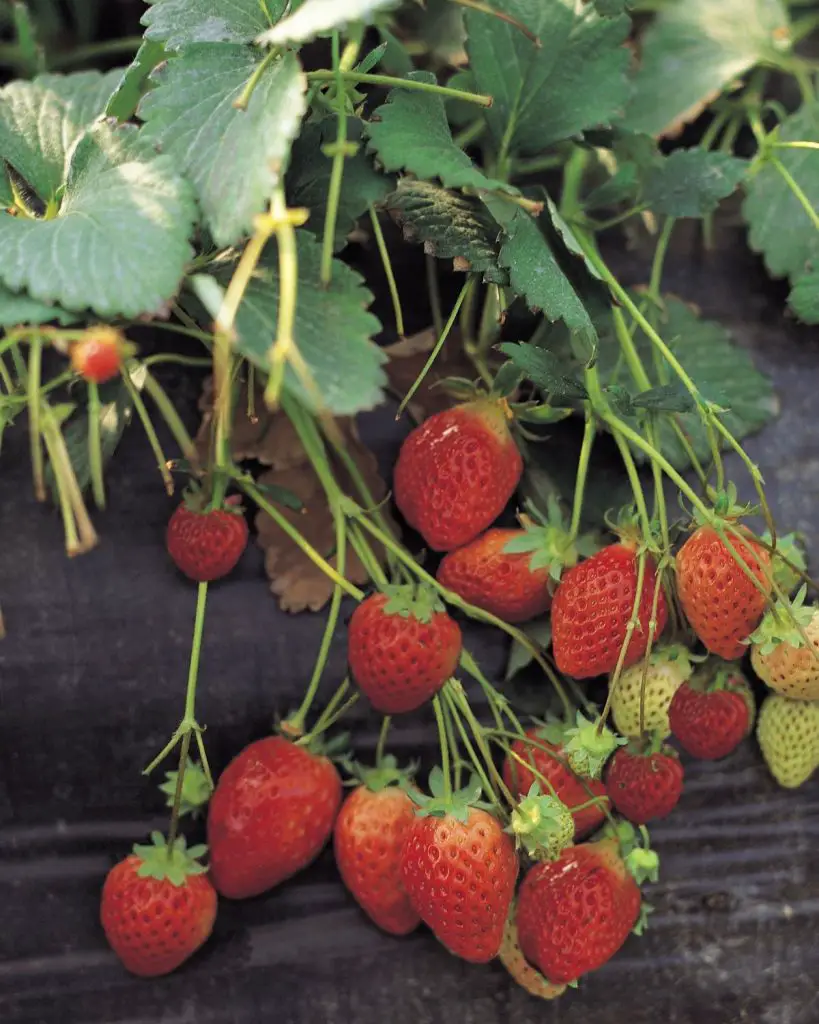
Pests and Diseases
Common Pests and Diseases
Strawberry plants are susceptible to a number of pests and diseases that can damage or kill the plants. Some of the most common pests that attack strawberries include aphids, slugs, thrips, beetles, mites, and caterpillars. These pests can cause damage to the leaves, flowers, and fruit of the plant, which can lead to reduced yields or even death of the plant.
In addition to pests, strawberries are also vulnerable to various diseases, including verticillium wilt. This fungal disease can cause wilting, yellowing, and stunting of the plant, and can eventually kill the plant if left untreated. Other diseases that can affect strawberries include gray mold, powdery mildew, and leaf spot.
To prevent and control pests and diseases, it is important to practice good plant hygiene, such as removing dead leaves and debris from around the plants and using clean tools when pruning or harvesting. Additionally, using companion plants and beneficial insects can help to naturally control pests and diseases.
Beneficial Insects
Beneficial insects can play an important role in controlling pests in a strawberry garden. Some of the most beneficial insects for strawberries include ladybugs, lacewings, minute pirate bugs, and parasitic wasps. These insects can help to control aphids, thrips, mites, and other pests that can damage strawberry plants.
One effective way to attract beneficial insects to your garden is to plant companion plants that they are attracted to. For example, yarrow, sweet alyssum, and French marigold can attract beneficial insects like ladybugs and lacewings, while crimson clover can attract minute pirate bugs and parasitic wasps.
Another way to attract beneficial insects is to provide them with a source of water and shelter. You can do this by creating a small pond or water feature in your garden and by planting native flowers and shrubs that provide habitat for beneficial insects.
In conclusion, pests and diseases can be a major challenge for strawberry growers, but by practicing good plant hygiene and using companion plants and beneficial insects, it is possible to control these problems and grow healthy, productive plants.
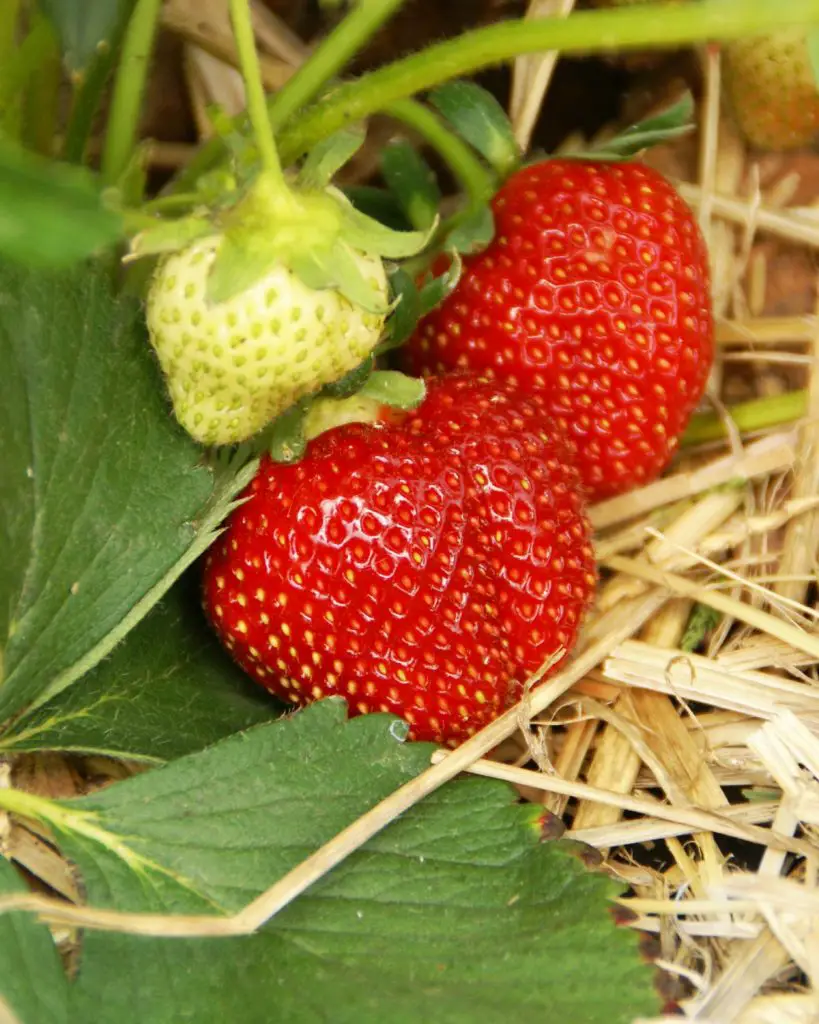
Pollination and Yield
When it comes to growing strawberries, pollination is key to a successful crop. Companion planting can help attract pollinators and increase yield. In this section, we will discuss how to attract pollinators and the benefits of nitrogen-fixing plants.
Attracting Pollinators
Bees, hoverflies, and other pollinators are essential for the successful pollination of strawberries. Companion planting with flowers such as roses, sweet alyssum, and yarrow can help attract these pollinators to the garden. Yarrow, in particular, is known to increase pollination rates by luring in bees and other pollinators. Additionally, yarrow attracts beneficial insects like predatory wasps, ladybugs, and lacewings, which help keep aphids and other destructive pests in check.
Another way to attract pollinators is by planting living mulch, such as white clover, around strawberry plants. Living mulch provides a habitat for pollinators and helps to retain moisture in the soil.
Nitrogen-fixing Plants
Legumes, such as lupin and clover, are nitrogen-fixing plants that can help improve soil fertility and increase yield. These plants have a symbiotic relationship with bacteria that live in their roots, which convert atmospheric nitrogen into a form that plants can use. By planting legumes around strawberry plants, you can help improve soil fertility and increase yield.
Borage is another nitrogen-fixing plant that can benefit strawberries. Borage flowers attract pollinators and add trace minerals to the soil, which can give strawberries a more intense flavor. Test strawberries companion planted with borage produced an average of 35% more fruits and had a 32% increased yield by weight.
In summary, companion planting can be a useful tool for attracting pollinators and increasing yield in strawberry plants. By planting flowers that attract pollinators and nitrogen-fixing plants, gardeners can improve soil fertility and increase the number of fruits produced by each plant.
Soil and Water
Soil Conditions
Strawberries prefer loamy, well-drained soil. They grow best in soil with a pH range of 5.5 to 6.5. The soil should be rich in organic matter and free from weeds and debris. Before planting, it is important to prepare the soil by removing any rocks or large clumps of soil.
Adding compost or well-rotted manure to the soil can help improve soil structure and fertility. It is also recommended to add a balanced fertilizer that contains nitrogen, phosphorus, and potassium. However, it is important to avoid over-fertilizing as it can lead to excessive vegetative growth and poor fruit production.

Watering
Strawberries require consistent moisture to thrive. They should be watered deeply once a week, or more frequently during hot and dry weather. It is important to avoid getting water on the leaves as it can lead to fungal diseases.
Mulching around the plants can help retain moisture in the soil and suppress weeds. Organic mulches such as straw or shredded leaves are recommended. It is important to avoid using plastic mulch as it can lead to poor soil aeration and root growth.
Table 1: Recommended Soil Conditions for Strawberries
| Soil Type | pH Range |
|---|---|
| Loam | 5.5-6.5 |
| Sandy | 5.5-6.5 |
| Clay | 5.5-6.5 |
Bullet Points:
- Strawberries prefer loamy, well-drained soil.
- Soil should be rich in organic matter and free from weeds and debris.
- Adding compost or well-rotted manure can improve soil fertility.
- Avoid over-fertilizing.
- Strawberries require consistent moisture.
- Water deeply once a week, or more frequently during hot and dry weather.
- Avoid getting water on the leaves.
- Organic mulches such as straw or shredded leaves are recommended.
- Avoid using plastic mulch.
Repelling Pests
Strawberry plants are often the target of pests, including rodents and insects. However, there are several companion plants that can be planted alongside strawberries that repel these pests.
Repelling Rodents
Rodents, such as mice and rats, can be a nuisance in strawberry gardens. One effective way to repel rodents is to plant mint. Mint has a strong scent that rodents find unpleasant, and will often avoid areas where it is planted. Another plant that can help repel rodents is lavender. Lavender has a strong scent that rodents find overwhelming, and will often avoid areas where it is planted.
Repelling Insects
Insects can also be a problem for strawberry plants, as they can damage the fruit and leaves. One effective way to repel insects is to plant marigolds. Marigolds have a strong scent that repels many insects, including aphids and whiteflies. Another plant that can help repel insects is catnip. Catnip contains a chemical called nepetalactone, which repels many insects, including ants, aphids, and squash bugs.
In addition to these companion plants, there are also several other methods for repelling pests from strawberry gardens. For example, using row covers can help protect strawberries from birds and other pests. Additionally, planting garlic and onions nearby can help repel pests, as their strong scent can be overwhelming for many insects and rodents.
Overall, by planting companion plants and using other pest-repelling methods, gardeners can help protect their strawberry plants from pests and ensure a healthy harvest.
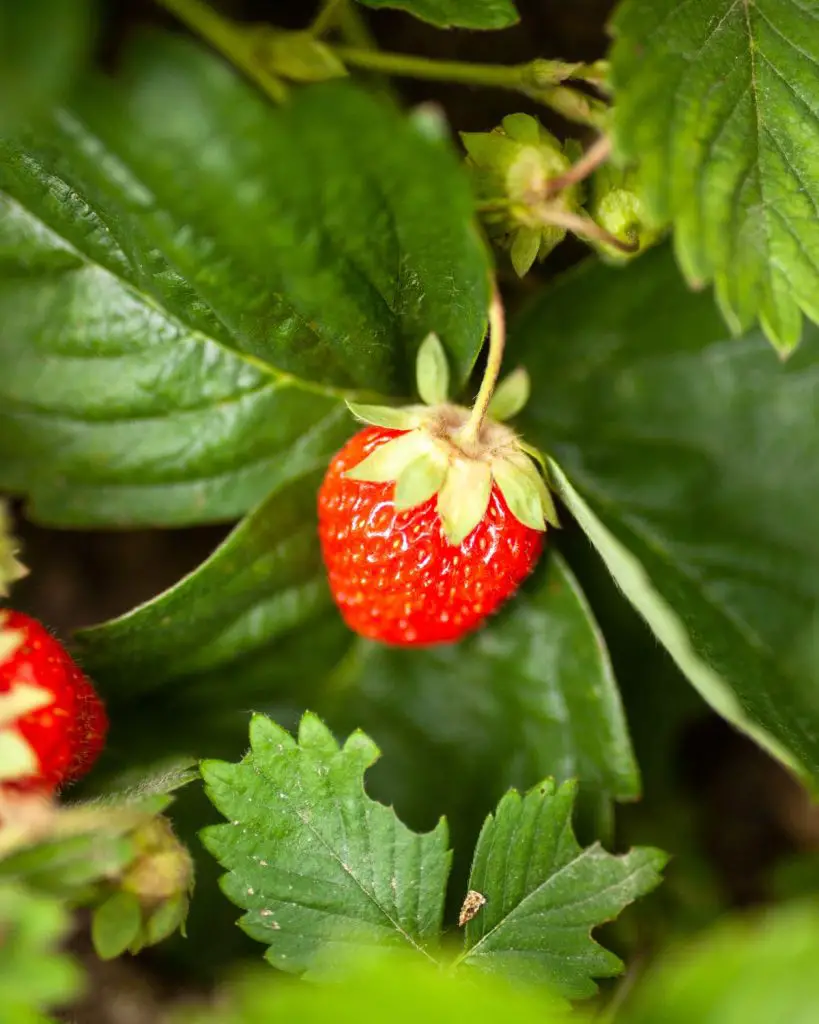
Conclusion
In conclusion, choosing the right companion plants for strawberries can significantly improve their growth and yield. By planting herbs, flowers, and vegetables that complement strawberries, gardeners can create a mutually beneficial environment for their crops.
One important factor to consider when selecting companion plants for strawberries is flavor. Certain plants, such as borage and thyme, can enhance the flavor of strawberries, making them even more delicious. On the other hand, it is important to avoid planting certain plants, such as onions, which can negatively affect the flavor of strawberries.
Another important consideration is the impact of birds on strawberry plants. Birds can be a significant problem for strawberry growers, as they are attracted to the sweet fruit. By planting companion plants that birds do not find appealing, such as clovers, gardeners can help protect their strawberries from these pests.
For gardeners who prioritize organic growing methods, companion planting can be an excellent way to promote a healthy, natural garden. By planting crops that naturally repel pests, such as garlic and borage, gardeners can reduce the need for harmful pesticides and promote a more sustainable growing environment.
Finally, it is worth noting that companion planting can be a great way to diversify the fruits and vegetables grown in a garden. By incorporating a variety of companion plants, gardeners can create a more varied and interesting garden, while also promoting the health and growth of their strawberries.
Overall, choosing the right companion plants for strawberries requires careful consideration and planning. By taking the time to research and select the best plants for their garden, gardeners can create a thriving, healthy environment for their crops.
You may also enjoy these related articles:
- Best Way to use Worm Compost Bins
- Decorating Garden Ideas | Create a Garden You Love
- Growing in Landscape Mesh for a No Weed Garden
Did you enjoy this article? Want to hear more? Stay in touch! Sign up below to receive weekly tips and inspiration for your homestead.

